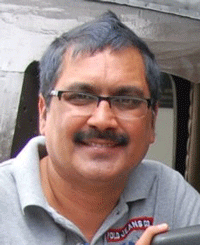Mumbai: India’s largest insights-based consultancy company- Kantar, along with GroupM’s experiential marketing unit- Dialogue Factory, today unveiled a first of its kind Rural COVID Barometer Report. This report provides a provides a unique, fact-based perspective on consumer sentiments, their consumption choices and the behavioral changes brought about by the pandemic. This survey was conducted in 17 Indian states and deep dives into the lives of Rural consumers and their adaptations post COVID, providing valuable inputs for any brand’s rural strategy.
The lockdown amidst COVID has brought about varied changes in the lives and livelihoods of Rural India. Loss of income, socio-cultural norms, health and hygiene protocols and reverse migration are some key challenges faced by the rural population during the pandemic.
The report highlights emergence of new trends which will necessitate changes in the way businesses and brands connect with rural consumers:
- Heightened focus on rural affluent consumers: The report suggests that with 1 in 3 rural adults being impacted by COVID-19, the rural economy is likely to take a hit. However, with fewer job losses and consequent reduction in the incomes of the affluent households, the overall impact on rural consumption pattern is likely to be muted in the future. This presents an opportunity for the businesses to sharply target their brands towards the upper end of the rural consumer spectrum
- Quest for balancing the budget: The rural Indian is walking the tight rope and is balancing the budget by cutting on “indulgence” categories like cold drinks, ready to eat snacks like chips etc. and diverting the savings towards hygiene products
- Digital adoption: Like their urban counterparts, rural Indians are increasingly relying on digital services for their day to day activities. With the pandemic accelerating digital adoption, there is a huge potential for businesses and brands to leverage mobile as a medium to reach rural consumers
- Focus on the future: The pandemic has heightened the worries around health and safety. The study highlights that rural Indians are today more concerned about their future well-being; especially of the chief earners. With a relatively weaker health infrastructure as compared to urban areas, the mindset of rural Indians is shifting towards financial planning. They are also considering buying health and other insurance products. This opens a large market for the BFSI segment.
- Last mile connectivity: With commute being restricted, the rural consumer is now increasingly shopping within the village for their FMCG needs. It is therefore imperative for the brands to focus on their distribution and last mile connectivity, since product availability in the local village stores will significantly impact brand choices of the rural shopper

Dalveer Singh, Head of Experiential Marketing- APAC, Dialogue Factory said, “Rural India has always had a higher degree of resilience which makes it more confident for a rapid recovery than the urban areas during these unprecedented times. This report; which is one of the biggest assessment of the impact of the pandemic on rural areas, speaks volumes on the new, defining values that are shaping rural India – resilience, planning for future, protection from falling sick and growing reliance on digital.”

A deeper analysis of the data reveals divergent regional trends. Says, Puneet Avasthi, Senior Executive Director, Insights Division, Kantar- “For businesses, we would recommend a regional prioritization. We believe that the Western India is likely to bounce back earliest. On the other hand, indications seem to suggest that rural South might take longer to recover as the impact of COVID 19 on employment has been more severe, which in turn has depressed the economic outlook of consumers in rural South. We see this as an opportunity for brands to deploy their resources across zones in a graded and phased manner”
The report also assessed the impact of reverse migration. The study suggests that nearly 53 million migrant workers in India have returned to their villages. 80% of migrants who have returned to due to COVID come from 5 States. Says, Mr. Avasthi– “With 1 out of 3 rural migrants not planning to go back to urban India, we are likely to see a huge shift in rural consumption choices. This will also affect the availability of labor in urban India”
The report also highlights a deep sense of optimism regarding India’s economic future; stemming from a healthy growth in the agricultural sector and near universal reach of targeted government programs (75% of all consumers claimed to have received at least one of the major government schemes for Rural India; 66% claimed to have received free rations under PM Garib Kalyan Yojana).

















